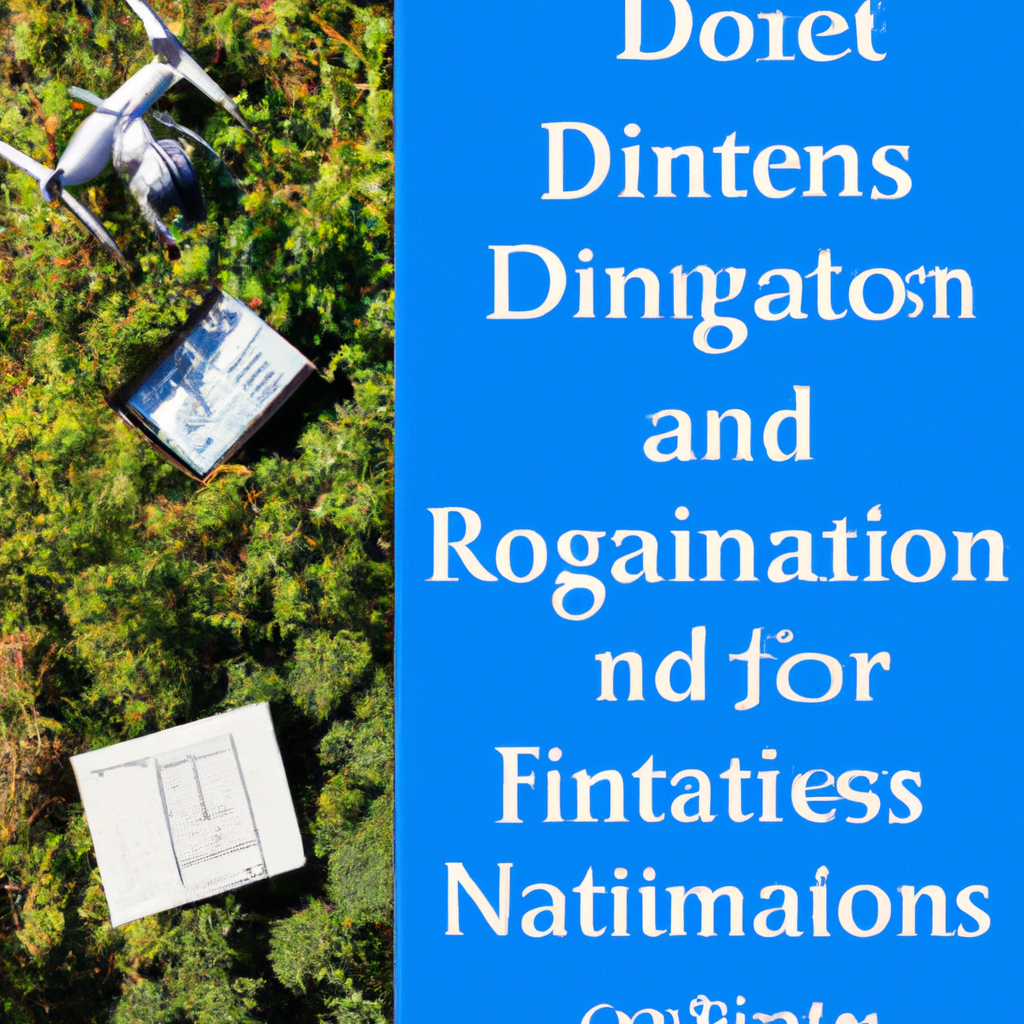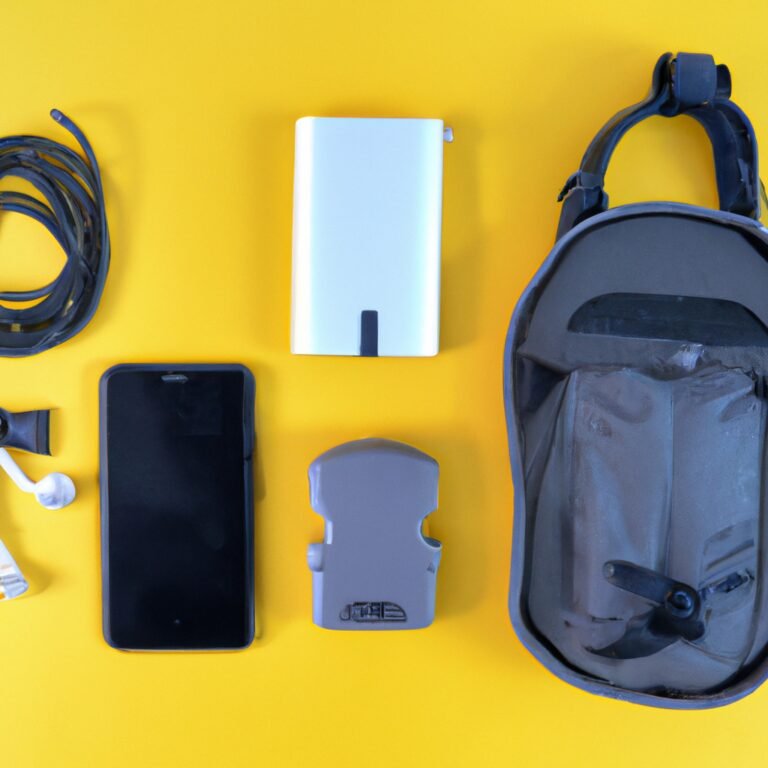
In a world where technology and nature often stand apart, there exists a remarkable synergy between drones and conservation. These unmanned airborne marvels have transcended their initial reputation as playthings of the tech-savvy and have found a profound purpose in safeguarding the fragile ecosystems that thrive on our planet. From the towering canopies of dense rainforests to the vast expanses of parched deserts, drones are silently revolutionizing the way we monitor wildlife and habitats. With their swift agility in traversing treacherous terrains and their all-seeing eyes that capture even the subtlest of details, these aerial guardians have become the unsung heroes of a new era in conservation. In this article, we delve into the fascinating world of drones for conservation, unveiling the immense potential they hold in preserving our natural wonders and ensuring a harmonious coexistence between humanity and the wild.
1. Taking Flight: Exploring the Revolutionary Role of Drones in Conservation
Drones have soared into the world of conservation, becoming a revolutionary tool in protecting and preserving our environment. These unmanned aerial vehicles are bridging the gap between technology and nature, allowing researchers and conservationists to explore new frontiers and gain invaluable insights into our planet’s ecosystems.
One significant role drones play in conservation is wildlife monitoring. With their ability to reach remote and inaccessible locations, drones equip researchers with a set of eyes in the sky. From tracking endangered species to studying migration patterns, the aerial perspective provided by drones revolutionizes our understanding of wildlife behavior. Their quiet and unobtrusive nature allows for close observations without disrupting natural habitats, ensuring accurate and undisturbed data collection.
Moreover, drones enhance the fight against illegal logging and poaching, giving conservationists an edge in protecting delicate ecosystems. Equipped with high-resolution cameras, drones are adept at capturing aerial imagery, such as deforestation activities or the movement of illegal hunters. By providing rapid response capabilities, these unmanned vehicles aid law enforcement agencies in their quest to curb destructive practices.
In addition to monitoring, drones are also playing a pivotal role in habitat restoration. With precision navigation systems, they can drop seeds or plant tree saplings in hard-to-reach areas, facilitating reforestation efforts on a larger scale. Drones become a vital ally in replenishing degraded environments, helping reverse the adverse effects of human activities on our planet’s biodiversity.
Drones in conservation come with their challenges, requiring responsible and ethical usage. Ensuring privacy and respecting the habitats they observe are crucial considerations. However, with proper regulation and guidelines, the use of drones has evolved into an indispensable asset for conservation initiatives worldwide, actively shaping conservation strategies for a sustainable future.
Innovation and progress often arise when we embrace new technologies, and drones have undoubtedly spread their wings, making significant strides in the world of conservation. As we continue to adapt and refine their capabilities, drones will undoubtedly remain a pioneering force in our ongoing battle to protect and preserve the natural world.
2. Eyes in the Skies: Unleashing Drones to Safeguard Wildlife and Preserves
Drones have emerged as a revolutionary tool in the conservation efforts to protect wildlife and preserves. Combining advanced technology and agility, these unmanned aerial vehicles provide a unique perspective for researchers and scientists to study animal behavior, monitor habitats, and detect potential threats.
Equipped with high-resolution cameras, drones capture breathtaking aerial views of the vast landscapes of wildlife reserves, allowing for a comprehensive understanding of their ecosystems. This visual data can reveal patterns and changes in vegetation, water sources, and animal populations over time, aiding in the development of effective conservation strategies.
One of the significant advantages of drones is their ability to access remote or hard-to-reach areas, minimizing human interference and disturbance to wildlife. By employing drones, conservationists can monitor endangered species, such as tigers or rhinos, without causing unnecessary stress or disruption to their natural habitats. This enables a better understanding of their movement patterns, helping to identify crucial migration routes and protect vulnerable populations.
The agility and quiet operation of drones make them ideal for conducting surveys of wildlife populations. By capturing images and videos from above, they can efficiently estimate the size and density of animal communities. The collected data assists scientists in tracking population trends, identifying areas of concern, and formulating strategies for conservation efforts.
In addition to monitoring wildlife, drones can also detect and combat illegal activities, such as poaching and deforestation, that pose a significant threat to both wildlife and preserves. Equipped with thermal imaging or hyperspectral cameras, drones can spot illegal activities in real-time, allowing law enforcement agencies to take immediate action and prevent further damage.
As the technology continues to advance, drones are becoming an indispensable tool in safeguarding wildlife and preserving delicate ecosystems. With their ability to access remote areas, reduce disturbance, and monitor populations, these “eyes in the skies” contribute to the conservation efforts in unimaginable ways, ensuring a sustainable future for our precious wildlife and natural treasures.
3. Harnessing High-Tech Guardian Angels: Unveiling the Potential of Drones in Protecting Nature
Drones, once a novelty in the world of technology, are now emerging as powerful tools in protecting and preserving our natural environment. These high-tech guardian angels hold immense potential in their ability to monitor and safeguard our precious ecosystems, offering a new level of surveillance and conservation efforts.
One key advantage of utilizing drones for environmental protection is their aerial capabilities. Equipped with advanced cameras and sensors, drones can seamlessly navigate through challenging terrains, reaching areas that are otherwise inaccessible for humans. From dense rainforests to vast marine habitats, these agile machines provide a bird’s-eye view, capturing vital data and imagery that aid in assessing the health of ecosystems.
Moreover, drones contribute significantly to wildlife conservation efforts. They can monitor endangered species, help track their movements, and even detect illegal activities such as poaching or habitat destruction. By collecting real-time data and transmitting it back to conservationists, drones enable swift responses, ensuring the safety and wellbeing of wildlife populations.
Additionally, drones are valuable in combating natural disasters such as wildfires and floods. Equipped with thermal imaging technology, these unmanned aircraft can detect hotspots and assist in managing fire outbreaks more efficiently. They can also survey flood-prone areas, assess risks, and aid in evacuation efforts. With their ability to cover large areas in a short time, drones play a vital role in disaster management and reducing human vulnerability.
This cutting-edge technology is also being harnessed for environmental research. Drones equipped with specialized scientific instruments can collect and analyze air, water, and soil samples, providing invaluable insights into pollution levels, climate change impacts, and the overall health of various ecosystems. This data assists scientists in better understanding our environment and facilitating evidence-based decision-making.
In conclusion, drones have emerged as versatile tools in protecting and preserving nature. From surveillance and wildlife conservation to disaster management and environmental research, these high-tech guardian angels are playing a crucial role in safeguarding our planet. As we continue to explore their potential, drones will undoubtedly revolutionize how we approach and protect our natural world.
4. Preserving Ecological Wonders with Advanced Aerial Surveillance: The Rise of Conservation Drones
Conservationists have long been faced with the challenge of protecting and preserving ecological wonders against various threats. From poaching and illegal logging to habitat destruction and climate change, the list of dangers seems never-ending. However, with the advent of advanced aerial surveillance technologies, a new and powerful tool has emerged – conservation drones.
Utilizing cutting-edge technology, conservation drones have opened up a world of possibilities for scientists and environmentalists alike. Equipped with high-resolution cameras, GPS tracking, and autonomous flight capabilities, these unmanned aerial vehicles (UAVs) have revolutionized the way we monitor and safeguard our fragile ecosystems.
One of the greatest advantages of conservation drones is their ability to cover vast areas quickly and efficiently. By flying over remote and inaccessible regions that would otherwise be difficult to monitor, drones have enabled conservationists to gather crucial data on wildlife populations, habitat destruction, and illegal activities with unprecedented ease.
Boldly soaring through the skies, conservation drones have become the watchful guardians of some of the most vulnerable species on our planet. Their aerial perspective allows them to detect and document the illegal activities of poachers, such as the illegal hunting of endangered animals or the destruction of their habitats. Armed with photographic evidence, conservationists can then take immediate action to prevent further harm and bring perpetrators to justice.
Moreover, conservation drones have also played a vital role in research and data collection. By capturing aerial imagery and footage, they enable scientists to analyze changes in vegetation, identify invasive species, and track the movements of migratory animals. This data helps researchers gain valuable insights into the health of ecosystems and design effective conservation strategies.
The rise of conservation drones has undoubtedly brought a new level of efficiency and accuracy to ecological preservation efforts. As technology continues to advance, these remarkable flying machines will undoubtedly play an even more significant role in protecting our fragile natural heritage, ensuring a sustainable and thriving future for our planet.
From helping farmers monitor and protect their crops to providing insight into natural habitats and animal species, drones are increasingly proving their worth in our quest to preserve and protect our planet. Through sophisticated technologies and creative deployment, drones are making tremendous leaps in conservation that are reshaping the way we understand and interact with the world around us. As we move forward, let’s continue to leverage this incredible resource to effectively protect wildlife and their habitats.



